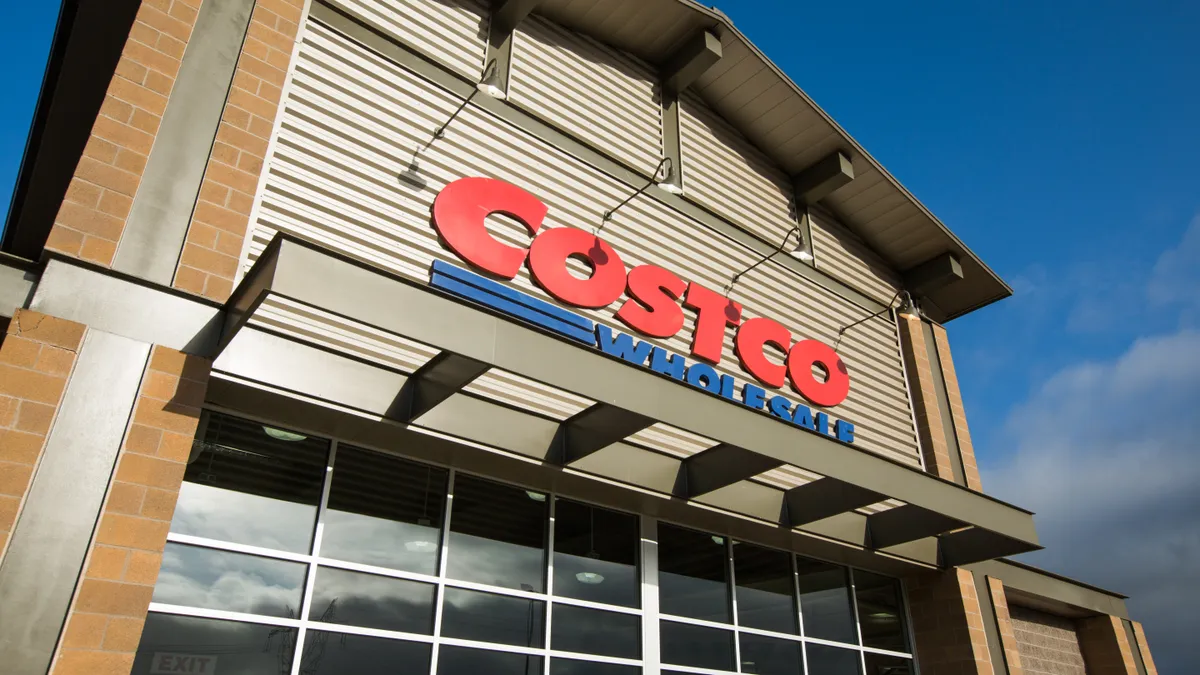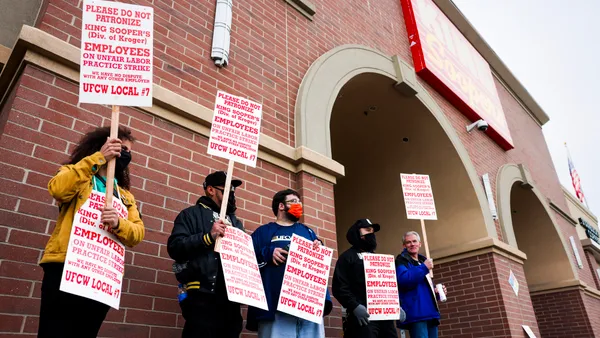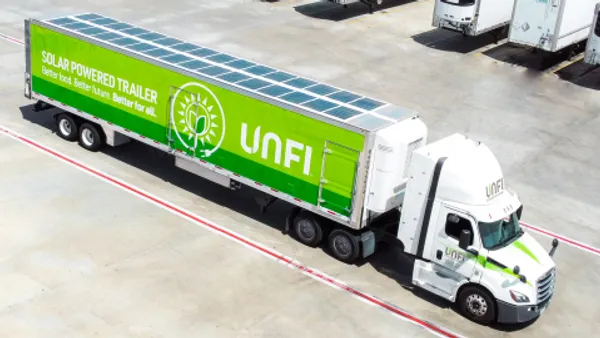Dive Brief:
- Costco posted a 13.6% increase in comparable-store sales, excluding fuel, during the fourth quarter of 2020, beating Wall Street's estimates. Net sales reached $52.28 billion, a year-over-year increase of 12.5%, excluding the effects of gasoline prices and foreign exchange fluctuations. Net sales for the fiscal year reached $163.22 billion, a 9.2% increase.
- E-commerce sales rose 91.3% during Q4 on a year-over-year basis, and were up 50.1% for the full fiscal year. Quarterly net income hit $3.13 per diluted share, up nearly 27% from the same period last year.
- The pandemic has helped Costco strengthen its position as a seller of food, and the company has also taken advantage of people's interest in buying nonfood items for their homes at a time when consumers have been going out less.
Dive Insight:
After struggling earlier this year with reduced store traffic, Costco has regained its footing in recent months as consumers have grown more comfortable with in-store shopping. Although the club retailer saw strong customer interest across a broad range of products, including big-ticket items, sales of fresh food were particularly robust.
Fresh items are selling so fast that Costco has virtually eliminated shrink, Costco Chief Financial Officer Richard Galanti said Thursday during a call with financial analysts. The decline in the amount of products that wind up not being sold because they are damaged or destroyed, combined with an improvement in productivity by workers, helped boost profit margins for food, he said.
“We don't have spoilage. We sell out, not literally but almost literally to the piece on these things, and so you're not throwing stuff away ... it’s a great business from a gross margin dollar perspective given the sales strength in it,” Galanti said.
Costco has seen visits to stores improve as people go out more often and become less timid about entering interior spaces during the COVID-19 pandemic, but traffic has not returned to pre-pandemic levels. Galanti said the company believes that the large size of its warehouses compared with other retail locations has helped make customers feel comfortable.
Traffic was up 1.2% at Costco’s U.S. locations during the fourth quarter, and the average basket size grew 12.7%, Galanti said. Food traffic at Costco locations was up 10% for the week beginning Aug. 31, according to Placer.ai, which measures foot traffic at retailers using anonymized mobile device data.
Costco has seen its supply chain improve in recent weeks, with pipelines of food and sundry items getting better even as certain high-demand products, like sanitizing wipes and latex gloves, remain hard to keep in stock. The company now has ample supplies of other popular items, such as face masks. Supplies of fresh food and proteins are also “pretty good,” Galanti said.
While the company expected sales of essential goods like food to be strong because of the pandemic, it was surprised at how well nonfood items performed, Galanti said.
That unexpected demand forced Costco to reverse decisions it had made earlier in the year. “Where in some instances we had tried to cut back a few orders back in March and April for seasonal summer goods like patio furniture, very quickly we were having to scramble for more of those,” Galanti said.
Costco was able to improve its delivery times for e-commerce customers during the quarter despite seeing a sharp increase in demand, Galanti said. He noted that strong food sales helped drive online sales.
Galanti added that Costco does not intend to start offering curbside pickup services at its warehouses despite the success other food retailers are seeing by letting customers collect purchases without having to enter stores.
“Our view ... is there’s some retailers that are doing it because they feel they have to,” Galanti said. “So, you know, we don't have our head in the sand on it. We look at it. We have people here that study it and maybe we'll surprise you one day, but at this juncture we're not prepared to do that.”
Galanti said Costco intends to continue the $2 per-hour pandemic-related wage premium it is paying its employees for at least the first eight weeks of the current quarter, noting that the extra pay costs the company approximately $14 million per week. The company spent $281 million on the higher-than-normal wages and sanitation costs related to the pandemic during the quarter.
Asked about the potential resistance Costco would face if it decides to end the extra compensation for workers, Galanti reiterated that the company has not decided if or when it would revert to its pre-pandemic pay policies. “I think it may be hard but not impossible, and we want to make sure we communicate to our employees of why we're doing it and we'll just have to wait and see,” he said. “I’d certainly budget it in for the full fiscal year."













